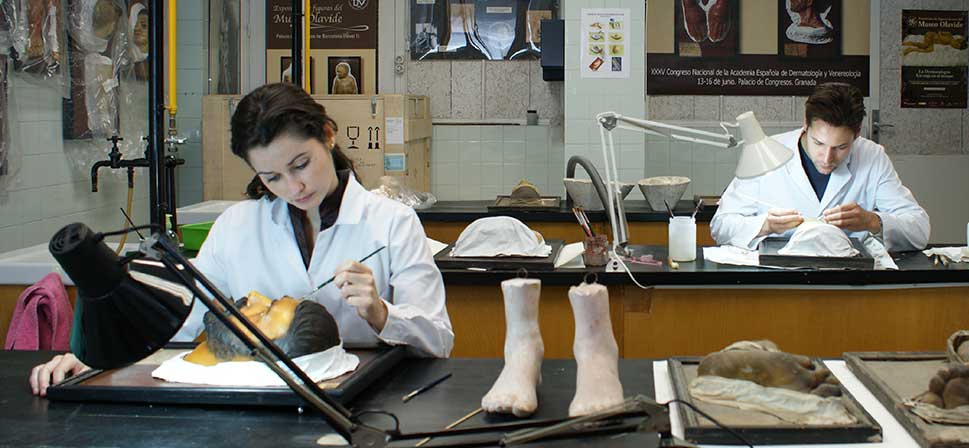Restoration
Following the closure of the Museum in 1966-67, the wax sculptures were packed and stored in different, often unknown locations, and soon being forgotten. For more than 40 years they remained locked in wooden boxes, in terrible conservation conditions. It was in 2005, when the Olavide Museum was ‘discovered’ again.
When it was moved to its present location and the boxes were opened, it became evident that the state of the wax molds was deplorable.
In addition to the thick layer of dust that covered them, in many of them we found the organic remains of dead animals, such as cats and mice which, when decomposed, have significantly deteriorated the material.
Cracks, fractures, deformation and loss of color are some of the damages we face. But not only wax: other materials that also make up the work, such as wood, fabric and especially paper, have suffered great damage.
Recovering the educational mission of these works is our great challenge. Perhaps, and fortunately, many of the pathologies represented can no longer be recognized in the current clinic but they serve as testimony for the approach to dermatological culture and the evolution that has accompanied medicine to this day.



